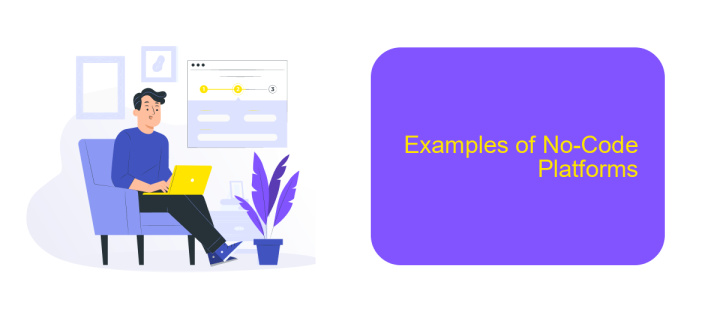No-Code Definition
No-code development platforms are revolutionizing the way individuals and businesses approach software creation. By enabling users to build applications without writing a single line of code, these tools democratize software development, making it accessible to non-technical users. This article explores the concept of no-code, its benefits, and how it is transforming industries by empowering a new wave of citizen developers.
What is No-Code?
No-code platforms empower users to create applications and automate workflows without writing any code. These platforms provide visual interfaces, drag-and-drop tools, and pre-built templates, making it accessible for non-technical users to build software solutions. This democratization of software development accelerates innovation and reduces dependency on professional developers.
- Visual Development: Use intuitive visual interfaces to design applications.
- Drag-and-Drop Tools: Simplify the building process with easy-to-use components.
- Pre-built Templates: Start quickly with ready-made templates for various use cases.
- Integration: Connect with other services and APIs effortlessly.
One notable service for integration is ApiX-Drive, which allows users to seamlessly connect different applications and automate data transfer without any coding. By leveraging no-code platforms, businesses can streamline their operations, reduce costs, and quickly adapt to changing market needs.
Benefits of No-Code

No-code platforms offer numerous benefits, making them an attractive option for businesses and individuals alike. One of the primary advantages is the significant reduction in development time. Traditional coding can be time-consuming and requires specialized skills, whereas no-code solutions allow users to create applications and automate processes rapidly without needing to write a single line of code. This democratizes app development, enabling non-technical users to bring their ideas to life and solve problems efficiently.
Another key benefit of no-code platforms is cost savings. By eliminating the need for a dedicated development team, businesses can reduce their operational expenses. Additionally, no-code solutions often come with built-in integrations that simplify connecting various services and applications. For instance, ApiX-Drive is a powerful tool that facilitates seamless integrations between different software, allowing users to automate workflows and improve productivity without extensive technical knowledge. These platforms empower organizations to innovate and adapt quickly in a competitive market.
Challenges of No-Code

No-code platforms have revolutionized the way individuals and businesses approach software development, but they come with their own set of challenges. One of the main issues is the limited customization options, which can hinder the creation of highly specialized applications. Furthermore, no-code tools often have scalability limitations, making it difficult to handle large-scale projects or complex workflows.
- Limited Customization: No-code platforms may not offer the flexibility needed for highly specific or unique requirements.
- Scalability Issues: These tools might struggle with handling large volumes of data or complex processes.
- Integration Challenges: Although services like ApiX-Drive can simplify integrations, they may not cover all potential use cases or external applications.
- Security Concerns: No-code solutions may not always provide robust security features, posing risks for sensitive data.
- Dependency on Platform: Relying heavily on a single no-code platform can create vendor lock-in, limiting future flexibility.
Despite these challenges, no-code platforms continue to offer significant advantages, especially for small to medium-sized projects. By leveraging integration services like ApiX-Drive, users can mitigate some of these issues, particularly in terms of connecting various applications and automating workflows. However, for more complex or large-scale projects, a combination of no-code and traditional development methods may be necessary to achieve optimal results.
Examples of No-Code Platforms

No-code platforms have revolutionized the way individuals and businesses create applications and automate workflows without needing extensive programming skills. These platforms empower users to build functional and complex solutions using visual interfaces and pre-built templates.
One of the significant advantages of no-code platforms is their ability to streamline integration processes. For instance, ApiX-Drive is a no-code tool that simplifies the integration of various apps and services, enabling seamless data flow and automation across different systems.
- Bubble: A comprehensive platform for building web applications with a visual editor.
- Zapier: Connects various apps and automates workflows without coding.
- ApiX-Drive: Facilitates easy integration of multiple services, enhancing automation.
- Adalo: Allows users to create mobile applications visually.
- Webflow: Combines web design and development in a no-code environment.
No-code platforms are democratizing technology by making it accessible to non-developers. They are becoming essential tools for startups, small businesses, and even large enterprises looking to innovate quickly without the overhead of traditional development processes.
Future of No-Code
The future of no-code platforms is incredibly promising, as they continue to democratize software development. With advancements in artificial intelligence and machine learning, no-code tools are becoming more powerful, enabling users to create complex applications without writing a single line of code. This shift empowers businesses to innovate rapidly, reduce costs, and adapt to changing market demands more efficiently. As more organizations recognize the benefits of no-code, we can expect a significant increase in adoption across various industries.
One of the key aspects of the future of no-code is seamless integration with other services. Platforms like ApiX-Drive are at the forefront, offering users the ability to connect different applications effortlessly. ApiX-Drive simplifies the process of automating workflows and integrating disparate systems, making it easier for businesses to streamline operations. As integration capabilities improve, no-code platforms will become even more versatile, allowing users to build comprehensive solutions that cater to their unique needs.
FAQ
What is No-Code?
Who can benefit from No-Code platforms?
What are some common use cases for No-Code tools?
How does No-Code automation work?
Are there any limitations to No-Code platforms?
Do you want to achieve your goals in business, career and life faster and better? Do it with ApiX-Drive – a tool that will remove a significant part of the routine from workflows and free up additional time to achieve your goals. Test the capabilities of Apix-Drive for free – see for yourself the effectiveness of the tool.

